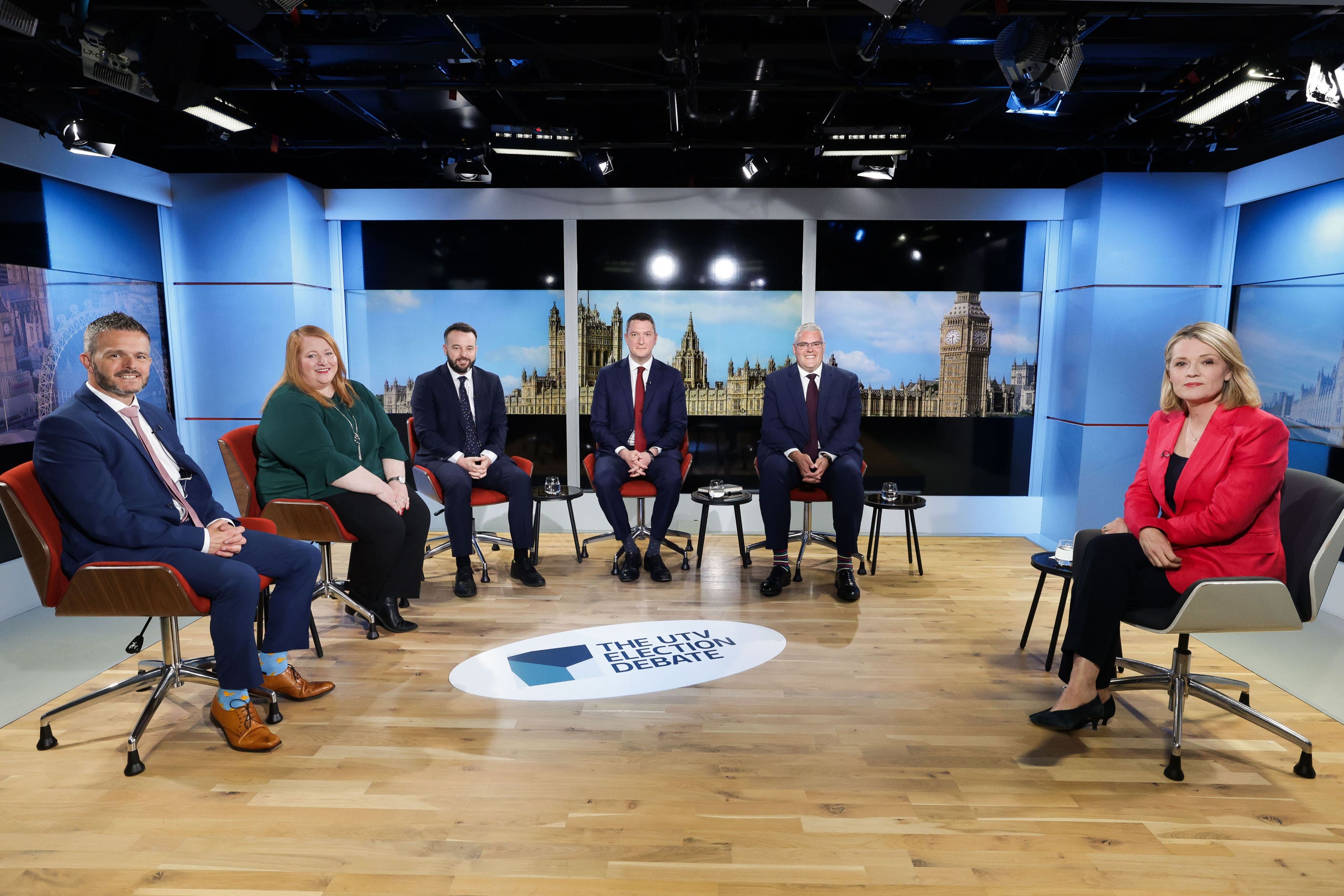How is the general election likely to play out in Northern Ireland?
As we enter the final weeks of the election campaign, Sean O’Grady takes a look at the different parties in Northern Ireland, and examines why the outcome there matters not just for the North but for Ireland – and Westminster


If Britain now has a five-party system – Conservatives, Labour, Liberal Democrats, Reform UK and Greens – then so does Northern Ireland, though with completely different major participants. There are now two principal unionist parties – the Democratic Unionist Party (DUP), which was founded by Ian Paisley, and the older (and smaller) Ulster Unionist party (UUP).
On the non-unionist side we find a nationalist party, the Social Democratic and Labour Party (SDLP), and the now dominant republican movement, Sinn Fein. Non-aligned or neutral on the issue of a united Ireland is the Alliance Party of Northern Ireland, which has enjoyed sustained growth during the power-sharing era.
In the six counties, even a quarter of a century since the end of the Troubles, the “national” or “constitutional” issue still exerts some influence on loyalties – in part, a consequence of Brexit reawakening some older controversies about the border on the island of Ireland and the strength of the economic union between Great Britain and Northern Ireland.
This is well demonstrated in the latest manifesto to be published – that of the DUP. They once again pledge to remove the post-Brexit trade barriers, the so-called economic border in the Irish Sea, though they don’t explicitly reject the Windsor Framework agreed between the UK and the EU, which governs these border issues.
Does the election in Northern Ireland matter?
Well, to the people of Northern Ireland it does, the same as anywhere else – and they, more than most, have a particular interest in how Brexit has affected their lives. The country voted Remain in the 2016 referendum, being more conscious than other parts of the UK of the difficult complications that would follow.
On the other hand, the DUP – usually the strongest party – was staunchly pro-Leave, and has been living with the uncomfortable consequences ever since, basically being against any borders between parts of the British Isles.
But does it matter for Westminster?
Traditionally, not so much, and the Northern Irish parties only get attention during a hung parliament, as in the late 1970s, the 1990s and after the 2017 election, when they (usually the unionists) could extract concessions for the North from a desperate British prime minister in exchange for their support in important votes.
In this election, there’s obviously going to be a large Labour majority, but there’s a tiny chance that the Tories might have to turn once again to the DUP. This is because they will need a closer, formal Commons alliance in order to make sure that the Liberal Democrats don’t overtake them and become the official opposition – but that’s still a bit far-fetched.
More important, any British government has a stake in maintaining good relations with all participants, for the sake of the peace process and keeping the devolved executive at Stormont running. A slide back to violence is in nobody’s interest.
The biggest complication is Sinn Fein’s longstanding policy of abstentionism – refusing to take up seats they’ve won in the Commons. As a republican party, they don’t recognise that the British parliament has any jurisdiction on the island of Ireland (notwithstanding their participation in the Northern Ireland Assembly and the executive). So they never turn up.
Who will win?
Sinn Fein. In the UK general election of 2019, the party secured seven of the 18 Northern Irish constituencies, while the DUP won eight. This time round, the DUP will pay the electoral price for the fall of its leader, Jeffrey Donaldson (who is facing serious charges of child abuse), and, for some, for their boycott of the power-sharing arrangements in protest at the Brexit Northern Ireland protocol and the sea border.
Now polling around 10 percentage points lower than in 2019, when they won 30 per cent of the vote, they face losing South Antrim to the UUP, while the Alliance leader Naomi Long is mounting a spirited challenge to the interim leader of the DUP, Gavin Robinson. The intervention of a loyalist candidate for Traditional Unionist Voice will also erode Robinson’s vote. If things do go against the DUP, they’ll be behind Sinn Fein for a Westminster round of elections for the first time, both in vote share and constituencies.
So are Sinn Fein now a powerful force on both sides of the border?
Not as much as they might have been. At one point, a couple of years ago, it seemed possible that they’d be in government in Belfast and in Dublin. Sinn Fein overtook the DUP to become the largest party at Stormont for the first time in the Northern Ireland Assembly elections in 2022, a result that was repeated in the council elections last year. Northern Ireland now has a Sinn Fein first minister, Michelle O’Neill – once an unthinkable outcome.
The unpopularity of the coalition administration in Dublin gave some hope to Sinn Fein that they could pull off a similar coup in Ireland. However, their pro-refugee stance meant that the party had a disappointing showing in the recent Irish local and European elections.
This doesn’t seem to have harmed them so much north of the border, but they are polling around the same as they achieved in 2019 – at about a quarter of the vote. They’ll likely overtake the DUP, but mainly because the DUP have slumped so badly. They don’t seem well placed at the moment to win the Irish general election scheduled for next year, and they look to have plateaued in the North.
Will there be a united Ireland?
No. A Labour government will make no difference. Keir Starmer has shown no inclination to agitate for a referendum, and the clear shift in public opinion required by the Good Friday Agreement in order to hold one hasn’t transpired. Starmer has, though, made improving trade with the EU a priority, and standardising rules will help to reduce checks and the friction in trade between Britain and both Ireland and Northern Ireland – which should be welcomed by all the parties (but probably won’t be).






Join our commenting forum
Join thought-provoking conversations, follow other Independent readers and see their replies
Comments